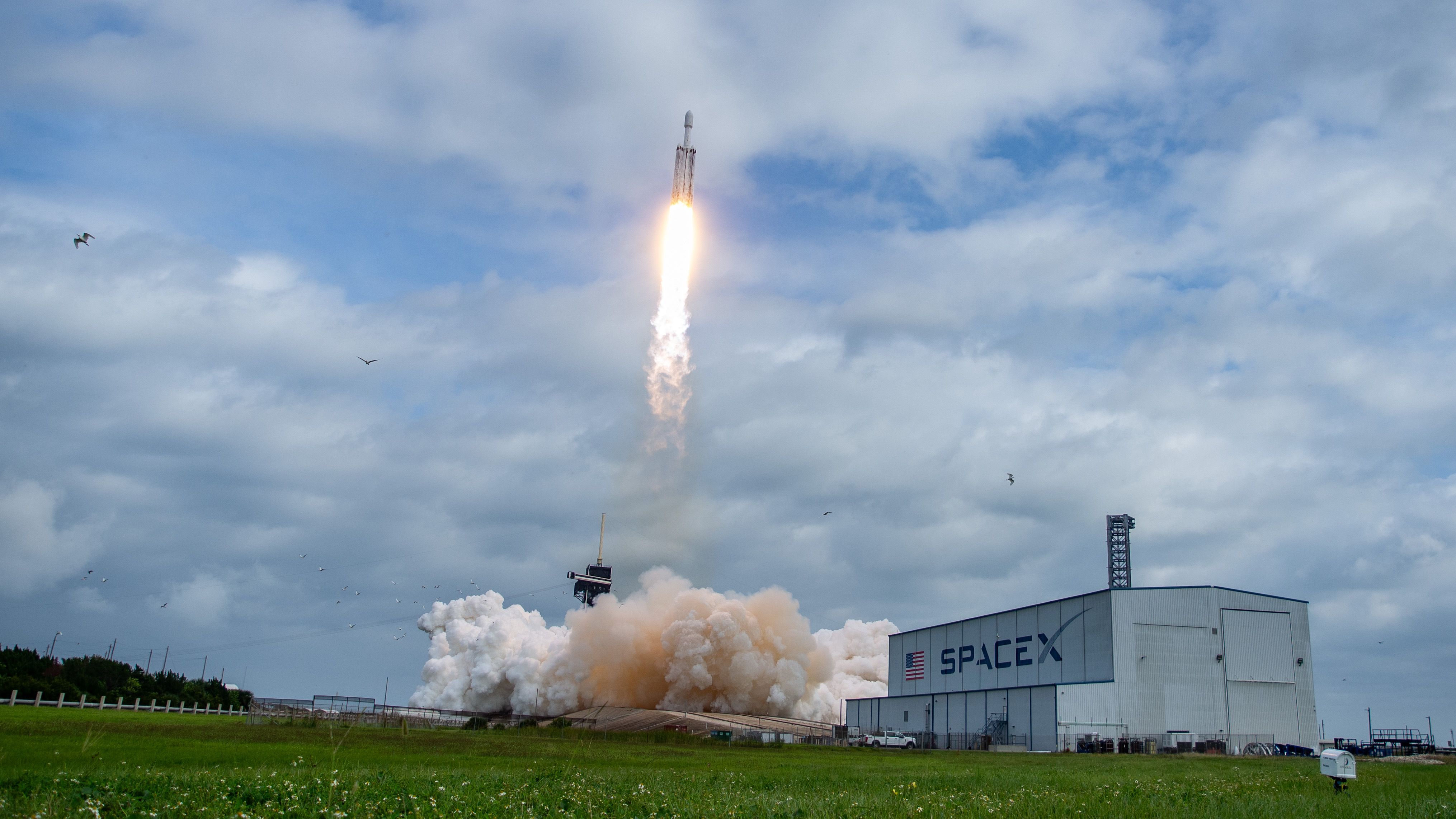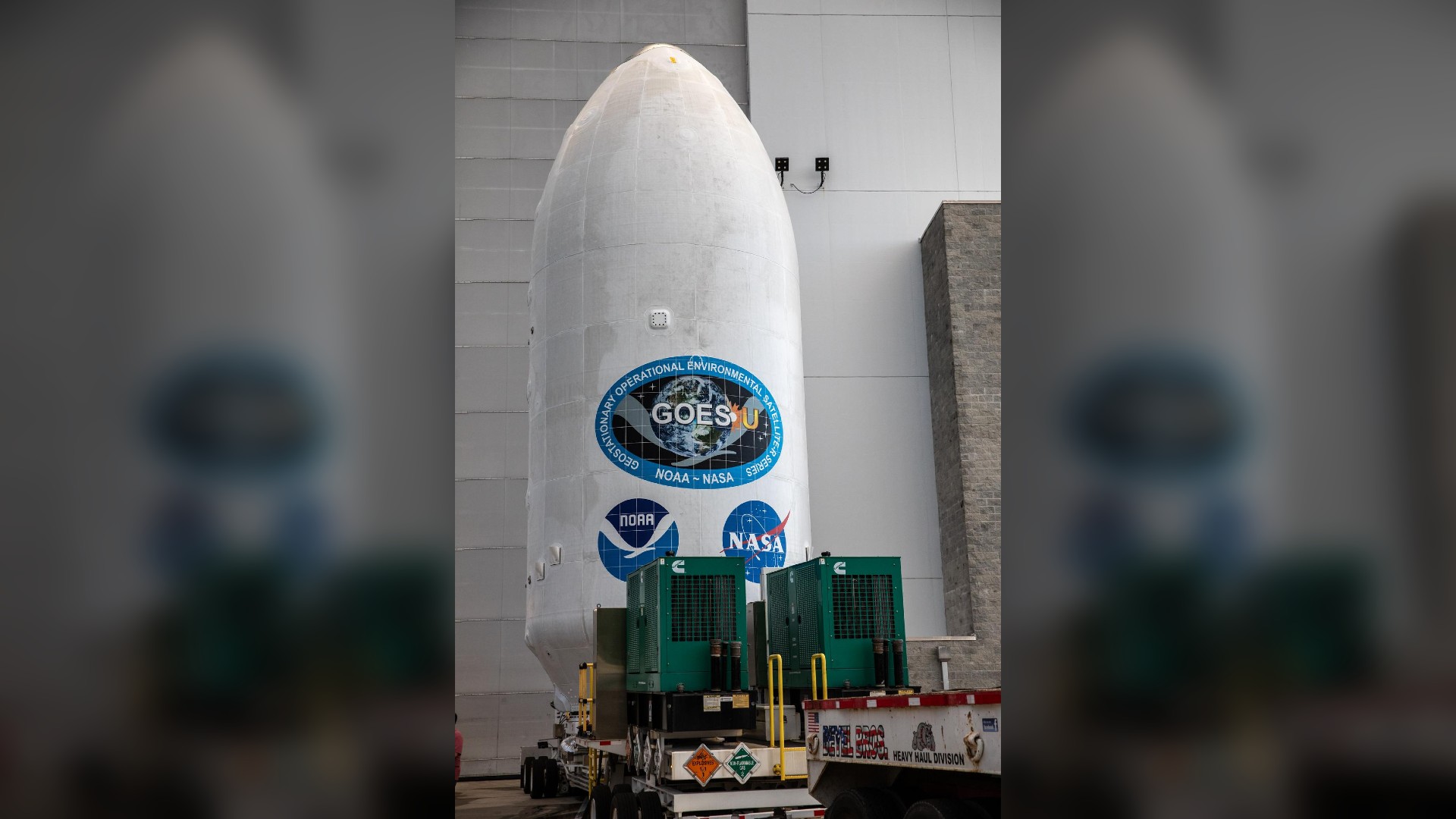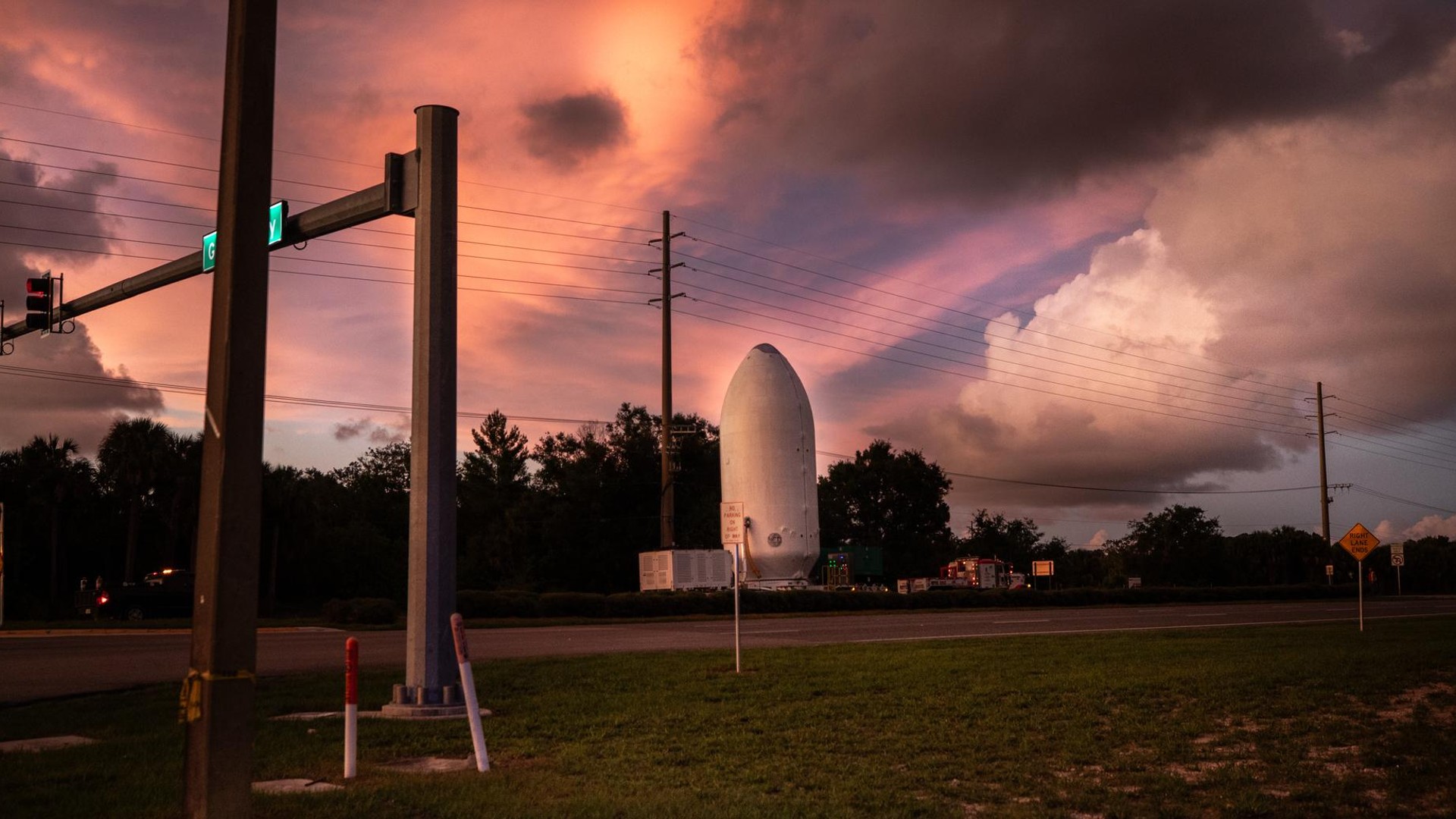How to watch SpaceX's Falcon Heavy rocket launch NOAA's GOES-U satellite today
The two-hour GOES-U launch window opens June 25 at 5:16 p.m. EDT (2116 GMT).
Update for 4:35 p.m. EDT: Mission managers have decided to push launch time to 5:26 p.m. EDT (2126 GMT) in order to increase chances of favorable weather.
The final NOAA satellite in NOAA's GOES-R series of weather satellites, GOES-U, is set to head to space.
The two-hour launch window opens at 5:26 p.m. EDT (2126 GMT) on June 25 and the mission will aim for the stars on a SpaceX Falcon Heavy rocket from Launch Complex 39A at NASA's Kennedy Space Center on Florida's storied Space Coast.
If you're going to be in or around Cape Canaveral, there are many spots from which you can watch the rocket soar into the sky. Florida's Space Coast Office of Tourism has compiled a map and list of launch viewing venues including beaches, parks, and restaurants surrounding Kennedy Space Center you can camp out at. Don't want to leave the house or travel to Florida? You can watch the launch live here at Space.com thanks to NASA. Coverage begins at 9:30 a.m. EDT (1330 GMT).

"Every launch is worth watching, it's something fun and exciting," Rex Engelhardt, GOES-U Mission Manager for NASA's Launch Services Program, told Space.com. "It is kind of a show and it's over quickly. With the booster return you get, it's nice — you get to stretch it out a little bit."
Related: The GOES-U satellite will catch a ride to space on SpaceX's Falcon Heavy rocket

The first launch of the series, GOES-R, was in 2016, followed by GOES-S and GOES-T in 2018 and 2022, respectively. But compared to its three predecessors in the series, GOES-U will be quite the shining star in the constellation.
Get the Space.com Newsletter
Breaking space news, the latest updates on rocket launches, skywatching events and more!
Not only will GOES-U have all the bells and whistles like its siblings — featuring instruments that provide state-of-the-art advanced imagery, take atmospheric measurements of Earth's weather, oceans and environment, as well as real-time mapping of total lightning activity — but GOES-U will also have improvements to each component based on what adjustments NOAA found were needed from the earlier trio.

"Our five-decade partnership with NOAA has resulted in the successful operation of more than 60 satellites dedicated to weather forecasting, severe storm and hurricane prediction, and climate observations. We're very excited to complete the four satellite GOES-R series with the most capable geostationary weather satellites in our nation's history," John Gagosian, director of NASA's Joint Agency Satellite Division, said in a virtual media briefing last month. "I'm proud that NOAA and NASA have collaborated so well over the life of the GOES-R program. We are poised for a very strong finish."
The successor to NOAA's GOES-R series will be the Geostationary Extended Observations (GeoXO) satellite system, which is scheduled to launch in the early 2030s.
Join our Space Forums to keep talking space on the latest missions, night sky and more! And if you have a news tip, correction or comment, let us know at: community@space.com.

Meredith is a regional Murrow award-winning Certified Broadcast Meteorologist and science/space correspondent. She most recently was a Freelance Meteorologist for NY 1 in New York City & the 19 First Alert Weather Team in Cleveland. A self-described "Rocket Girl," Meredith's personal and professional work has drawn recognition over the last decade, including the inaugural Valparaiso University Alumni Association First Decade Achievement Award, two special reports in News 12's Climate Special "Saving Our Shores" that won a Regional Edward R. Murrow Award, multiple Fair Media Council Folio & Press Club of Long Island awards for meteorology & reporting, and a Long Island Business News & NYC TV Week "40 Under 40" Award.









